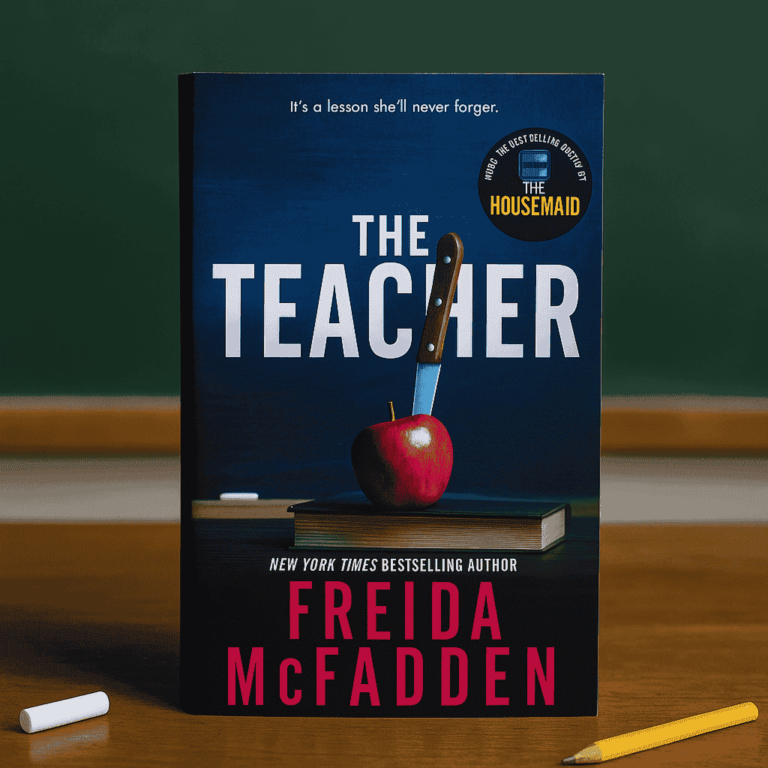Unstoppable Fear: Review of ‘Horror Movie’ by Paul Tremblay
Paul Tremblay’s Horror Movie offers a peculiar yet refreshing take on the haunted film subgenre, Comparing Horror and Romance on the Big Screen, blending horror and drama in a way that feels both unsettling and deeply human. The story centers on an unfinished horror film from the summer of 1993, shot at a condemned school in Rhode Island. The unnamed narrator, recruited by his old classmate Valentina, plays the silent, mysterious Thin Kid—a role he lands not because of acting talent but due to his lanky, attenuated frame. As production progresses, boundaries are tested, physical and mental health deteriorate, and a tragedy on set halts the project. Fifteen years later, leaked scenes and an incomplete screenplay spark a cult following among horror fans, fueling speculation and conspiracy theories. Tremblay masterfully blurs the line between novels and movie scripts, crafting a dark, multilayered narrative that keeps readers questioning what’s real and what’s imagined.

A Haunting Exploration of Past and Present
Years later, Hollywood decides to reboot the infamous project, pulling the Thin Kid back into the chaos as the only surviving cast member. Reluctantly agreeing to reprise his role, he’s haunted by memories of the strange and brutal events during the original filming. The narrative shifts between mediums—audiobook narration, historical events, and present-day meetings—immersing readers in a world where the fourth wall is shattered. This approach forces readers to confront their own confusion about the unfolding dread. Tremblay explores themes of mental health, family drama, and the blurred line between reality and fiction. Characters like Karson and the narrator, referred to as “Weird Guy,” add depth to the creepy story, while the Thin Kid embodies the pain, sorrow, and anger of his character. His scars—both physical and emotional—linger, and the brutality of the past continues to haunt him, leaving readers questioning what truly happened on that fateful set.
A Blurred Line Between Reality and Fiction
Tremblay’s Horror Movie excels in keeping readers on edge, constantly questioning what is real and what is imagined. The Thin Kid, deeply embedded in his role, blurs the line between performer and performance. Set in the 90s, the novel dives into the making of a bizarre horror film where gnarly accidents, extreme violence, and unsettling methods challenge the boundaries between fiction and reality. As the narrative shifts between timelines—past, present, and screenplay excerpts—readers piece together purposeful holes in the plot. Tremblay’s use of ambiguous storytelling shines, bending the rules of horror to their limits. Was it a curse, shared mental illness, or unchecked ambition? The unsettling moments pile up, leaving readers both fascinated and discomfited. This manipulation inherent to artistic creation is explored through the slippery give-and-take between the auteur and the audience, with the protagonist’s descent mirroring the phantasmagoria of memory and imagination.
A Slow Burn with a Gasp-Inducing Denouement
The novel’s structure may test some readers’ patience as its slow burn unfolds through overlapping narrative frames, including the original script and present-day exploits. However, this deliberate pacing allows Tremblay to build tension and momentum, culminating in a gasp-inducing denouement. Characters like Valentina, the confident director, and Cleo, the screenwriter, add depth to the chaotic process of filmmaking, while the unnamed narrator’s obsession with his role as the Thin Kid feels hauntingly real. Tremblay interrogates the nature of evil acts, exploring how far people will go when fueled by power and ambition. By the end, the beauty of Tremblay’s storytelling grips you tightly around the throat, refusing to let go. The bravado and skill in layering these overlapping narratives ensure the book never loses its momentum or direction.
A Creepy and Intellectually Engaging Read
Horror Movie is both strange and unsettling, seamlessly blending screenplay excerpts with traditional storytelling. Tremblay’s unique voice shines as he explores the unreliable nature of memory and the nature of evil acts. While the main character remains nameless and somewhat bland, this reinforces the idea that he’s a blank slate for readers to project onto. Moments like the 5-minute door scene linger in the mind long after reading, leaving you questioning what you’ve just experienced. It’s one of those books that might not be easy to enjoy conventionally, but it undeniably elicits emotions and sparks introspection. Horror Movie is a fanatical, notoriety-worthy read for readers willing to embrace its gray area.






